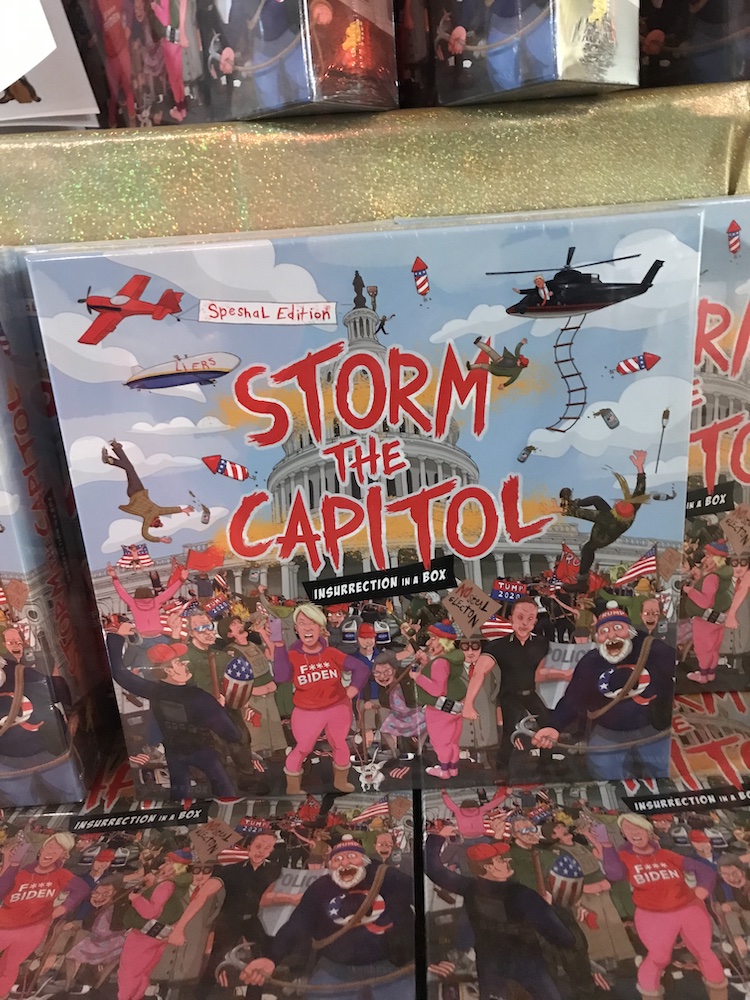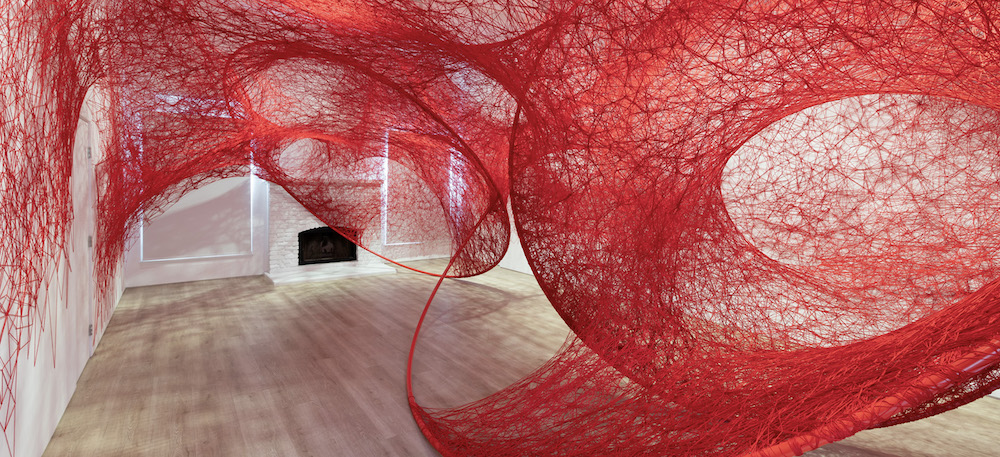I don’t know about you, but I’m still recovering from Frieze LA (Feb. 29–March 3), and the art week that was. In addition to the main event, there were many gallery openings and events, and also the Felix and Spring/ Break art fairs. At Frieze there were fewer galleries this year—about 95 versus last year’s 120—all packed into one big custom-built tent at Santa Monica Airport. Last year, most of the galleries were in the big tent, with a selection down the hill at Barker Hangar. Ironically, last year I heard complaints from gallerists relegated to the latter location, but Anthony Meier told me this year, “We did quite well after all, so we were happy.”
After attending the Thursday preview, I returned Saturday afternoon for some people-watching. Art fairs have become part of weekend entertainment, and Frieze drew an enthusiastic crowd, despite its high-priced admission. The aisles were jammed with friends on the hunt for new artists, young parents with toddlers in strollers and couples on dates. Kudos to the galleries that had one-person and thematic exhibitions; they really stuck in my mind.
Let’s take The Pit, with its walls painted in pleasing pastels, the back one dotted with white squiggles and shapes, which were ceramic pieces by Allison Schulnik that tell of the faceoff between two creatures outside her desert home, south of Joshua Tree. For an hour she watched as a snake and a cottontail rabbit confronted one another. “At first I was afraid for the bunny. I thought he’d be killed,” she told me. “Then I realized that the rabbit was the aggressor, sometimes moving in to nip at the snake.” The snake lunged forward, which made the rabbit jump and run away. This
drama was depicted in several pieces on the wall: the snake lurching forward, the rabbit falling back into a curl. “Fortunately, they both came out alive,” Schulnik reported.
Los Angeles–based Gary Tyler won the 2024 Frieze Los Angeles Impact Prize, an honor saluting an artist who has “made a significant impact on society with their work.” He had a solo project at Frieze LA and received a $25,000 award. Tyler learned quilting during his 42-year incarceration, and he has used the medium to tell stories about his time in prison and the people he met. With quilting, he has said, “I had found my calling.”

Board game Storm the Capital by Z Behl + Walker Behl + Tavet Gillson at Spring/Break. Photo by Ezrha Jean Black.
For a break, I went to Spring/Break in Culver City—and found it refreshingly creative and friendly. Spring/Break has entered its fifth year in Los Angeles with some 90 exhibitors. Twelve years ago, Ambre Kelly and Andrew Gori launched the fair in New York as a fun alternative to the mainstream art-fair scene. They drew independent curators, artists without major gallery representation, or a combination of both. In Los Angeles this year, at least one stand was organized by two artists—Alonsa Guevara and James Razko, who curated each other’s work.
When Kelly and Gori started the Los Angeles fair, they were downtown. However, they always wanted to be arranged and geographically close to Frieze, which moved from Hollywood to Beverly Hills to Santa Monica. So Culver City seemed to be a good location this time, especially, as Gori points out, with an arts district nearby.
Inside the red brick building the fair occupied, there were walls dividing exhibitors, but hardly a plain vanilla cube was to be found. “We discourage white walls unless there’s a purpose for it,” Gori said. “These spaces come with their own character.” The exhibitors try to exhibit some personality, as well. They paint their walls different colors or give them a special treatment. They provide comfortable seating and linger in the aisles to chat and invite visitors in. Claire Foussard gave her walls a cement coating, and Yiwei Gallery painted trompe l’oeil Doric columns to frame its space. Others created installations—Z Behl + Walker Behl + Tavet Gillson built an immersive, 3D version of their board game, Storm the Capitol: THE “BIG” EDITION, a darkly comic look at the insurrection on January 6 in Washington, DC. Meanwhile, Hicham Oudghiri set up a tent that people could enter and sit in.
Foussard also featured two very intriguing artists. Angelica Yudasto created ethereal drawings floating in layers of kiln-formed glass, while Jiwon Rhie made a slapping machine mounted on an outside wall—a kinetic sculpture of a padded hand that swings around to smack you in the face. It was her way of venting the rejection she felt from various institutions after moving to the United States. At one point, Rhie bent over to demonstrate, putting her cheek in line with the hand. She smiled when I look concerned, and assured me, “It’s very gentle.”

Installation by Chiharu Shiota.
On Seward just north of Santa Monica Boulevard is a new gallery that quietly opened last year—new to us, but the first American branch of one of Korea’s leading galleries, Gana Art. They opened an exhibition of work by Japanese artist Chiharu Shiota the weekend before Frieze, titled “In Circles.” Last year Shiota created that sensational installation using interconnected red string which engulfed the lobby of the Hammer Museum, one of the best transformations of that space. It felt like the inside of a magical spider’s lair. The gallery is housed in two small buildings, one featuring Shiota’s smaller works in display cases and on panel, the other a room-sized version of her installation work, based on three gigantic hoops. It was a wonder to walk throughout the exhibition.
The artist is now based in Berlin, but she paid a visit for the opening of her Gana exhibition in LA. In person, Shiota is quite modest and soft-spoken. She told me that as a child in Japan, she had seen the works of Dalí in the Sunday newspaper, and then became interested in art. She began drawing all the time: “It’s like my secret world, my own world.” To this day her art feels like a secret world: one we feel privileged to visit.


